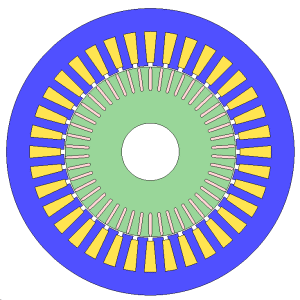Contents
1. Background
2. Issues with conventional induction machine plant models
3. Improvements in induction machine plant models
4. Conclusion
1. Background
Induction machines have been traditionally mainly used for industrial applications, but in recent years induction machines have been investigated as one of the candidates for electric vehicle drive motors. Compared to industrial use, control design such as control response of motors is important because it is assumed that motors operate over a wide operating range (variable speed) when driving automobiles (variable speed). Therefore, a highly accurate plant models such as JMAG-RT models are used for evaluating motor drive systems.
In this paper, improvements in the accuracy of induction machine plant models when applied to automobile drive motors are discussed.
2. Issues with conventional induction machine plant models
In induction machine plant models up to now, machine constants were obtained from classical no-load test and locked test analysis. When being driven, it has often been assumed that machine constants are constant. It was impossible to reproduce the behavior under magnetic saturation and influences from skin effect assumed when used for driving automobiles. When used for driving automobiles, a plant model is required that takes into account magnetic saturation of machine constants and slip frequency dependence. The following points can be raised as issues concerning machine constant calculations with existing conventional methods.
- Extrapolation of machine constants taken from two tests- a locked test such as in JIS C 4210 locked test method A and a test at 1/2 of rated frequency- is prone to error due to low slip
- First-order and second-order leakage inductance cannot be separated
- Excitation inductance is obtained from a no-load test and the secondary current is obtained from a locked test, and calculated in a non-driven state.

Fig. 1 Induction machine
The rotor bar is long to increase starting torque making it susceptible to the skin effect
Table 1 Induction machine specifications
| Parameter | Value |
|---|---|
| Number of poles | 6 |
| Number of stator slots | 36 |
| Number of rotor slots | 46 |
| Primary phase resistance (ohm) | 0.0304 |
| Number of turns | 4 turns / coil |
| Output | 45 kW |
You need to sign in as a Regular JMAG Software User (paid user) or JMAG WEB MEMBER (free membership).
By registering as a JMAG WEB MEMBER, you can browse technical materials and other member-only contents for free.
If you are not registered, click the “Create an Account” button.
Create an Account Sign in



